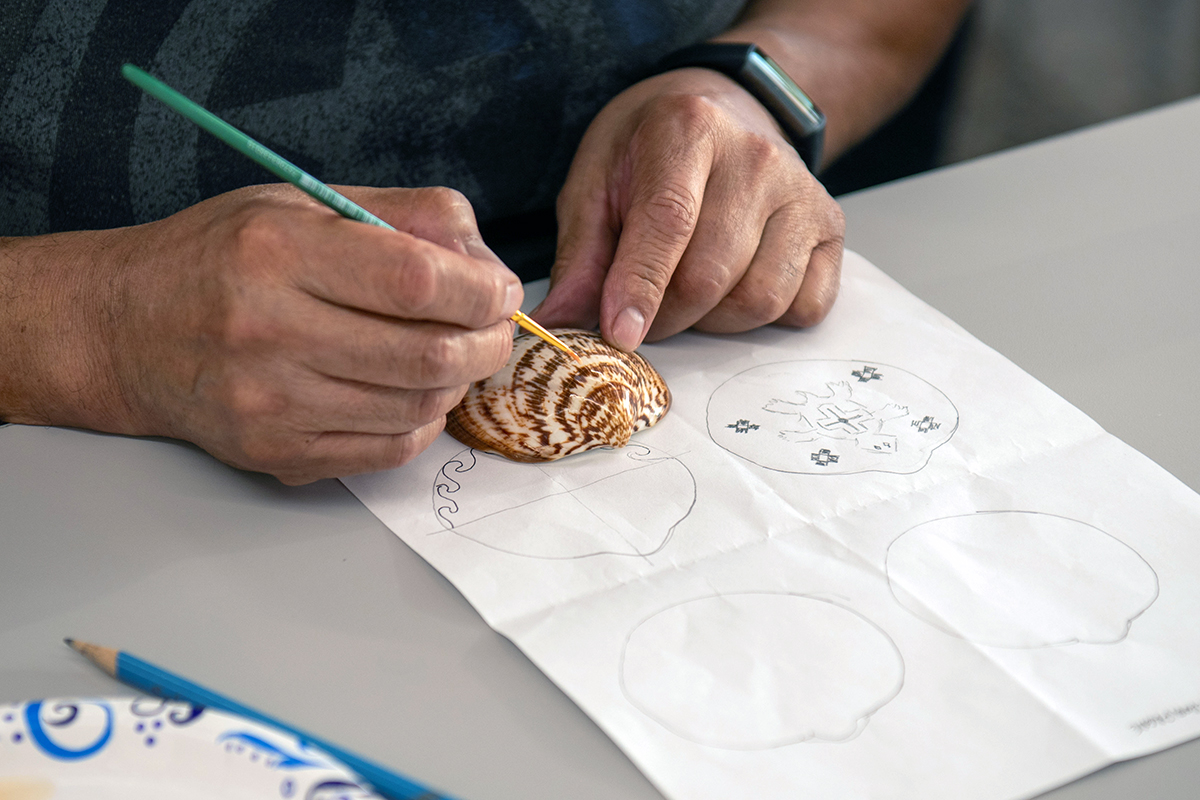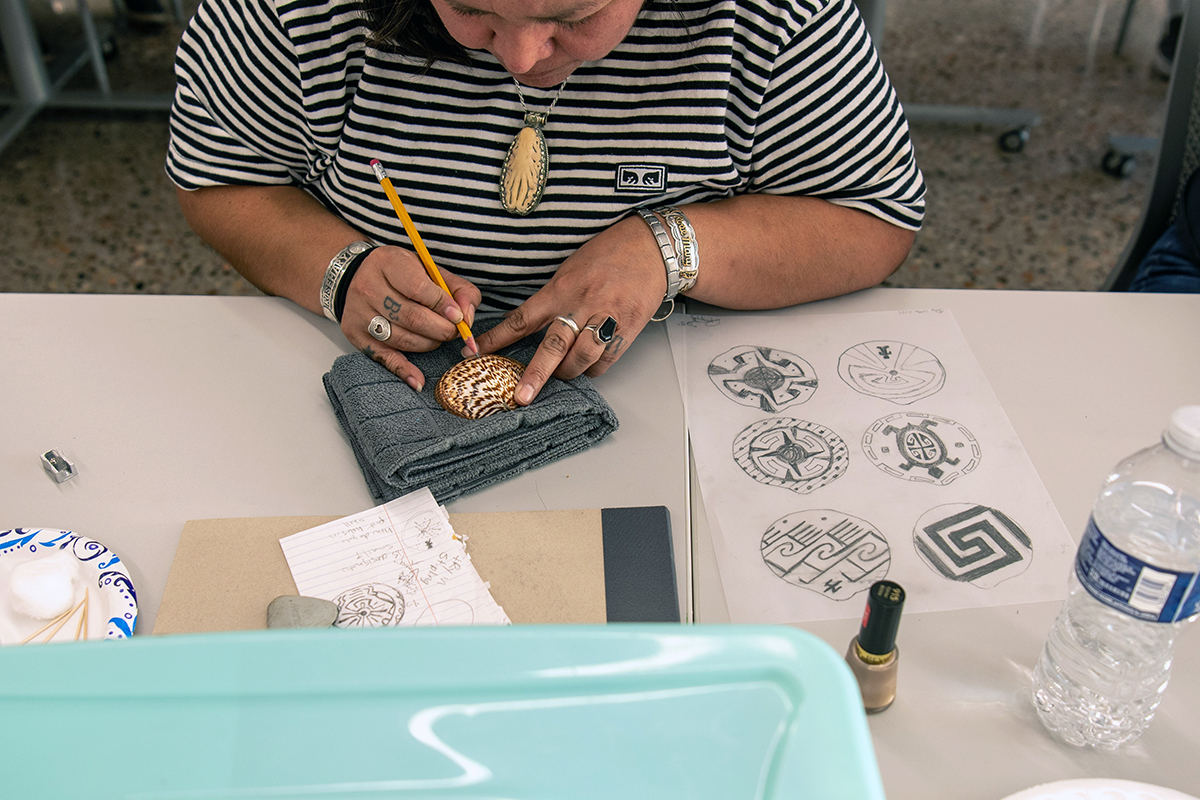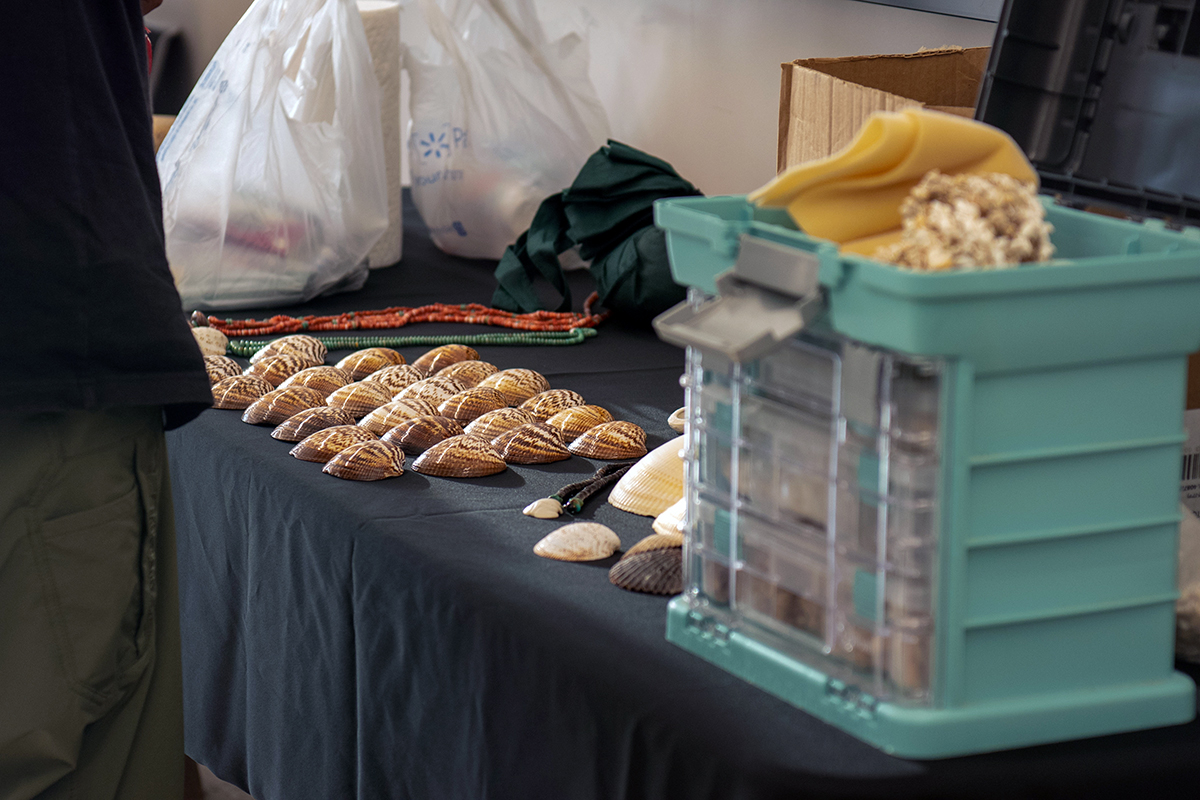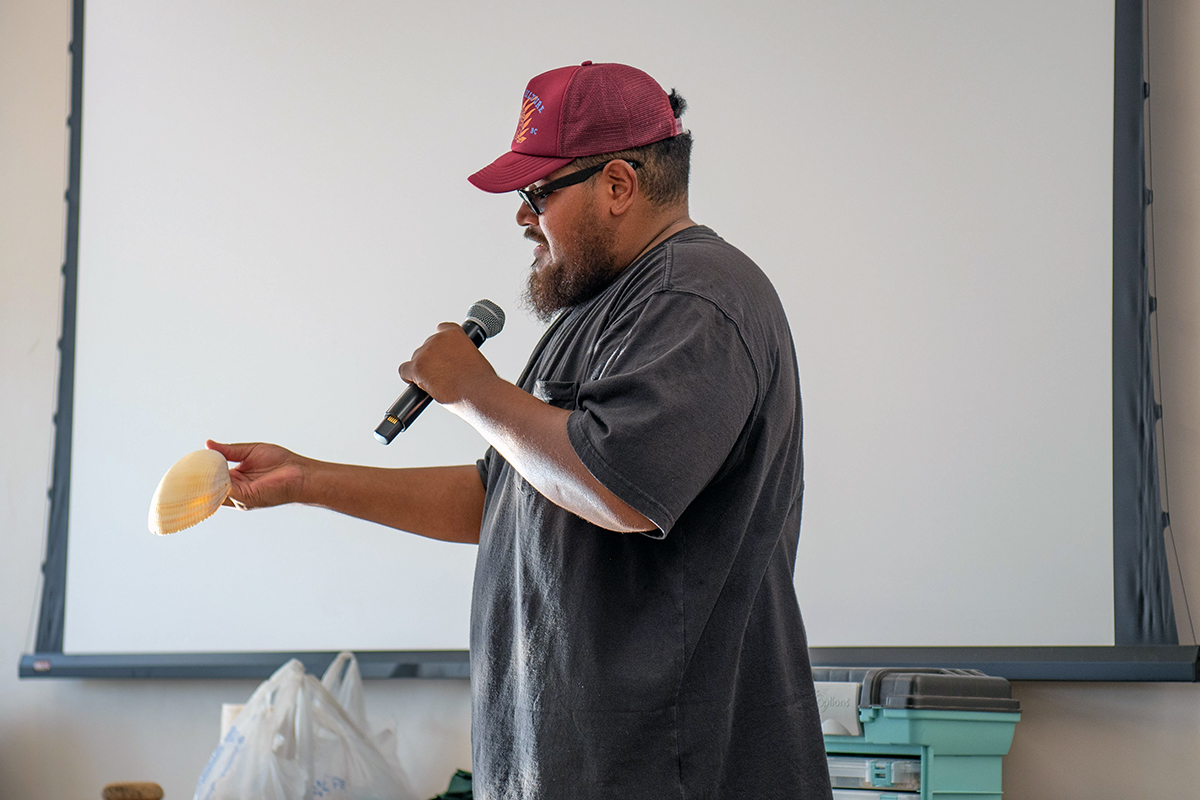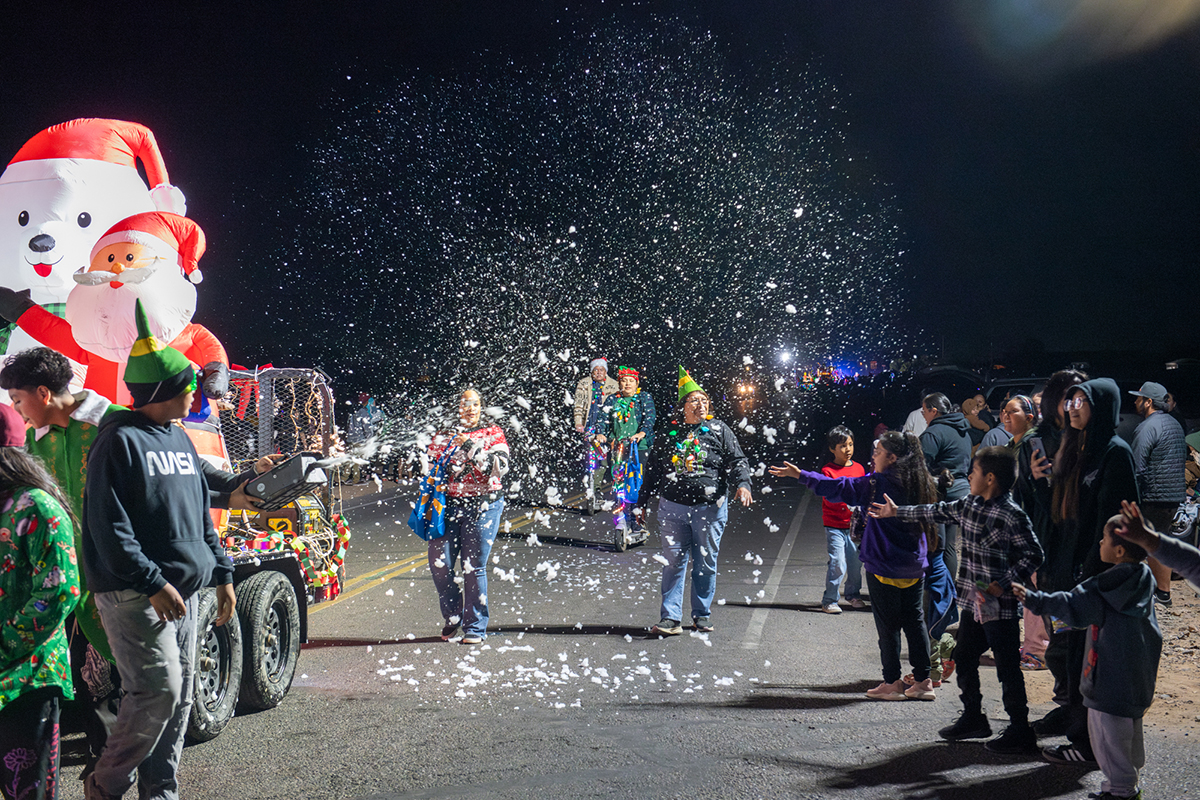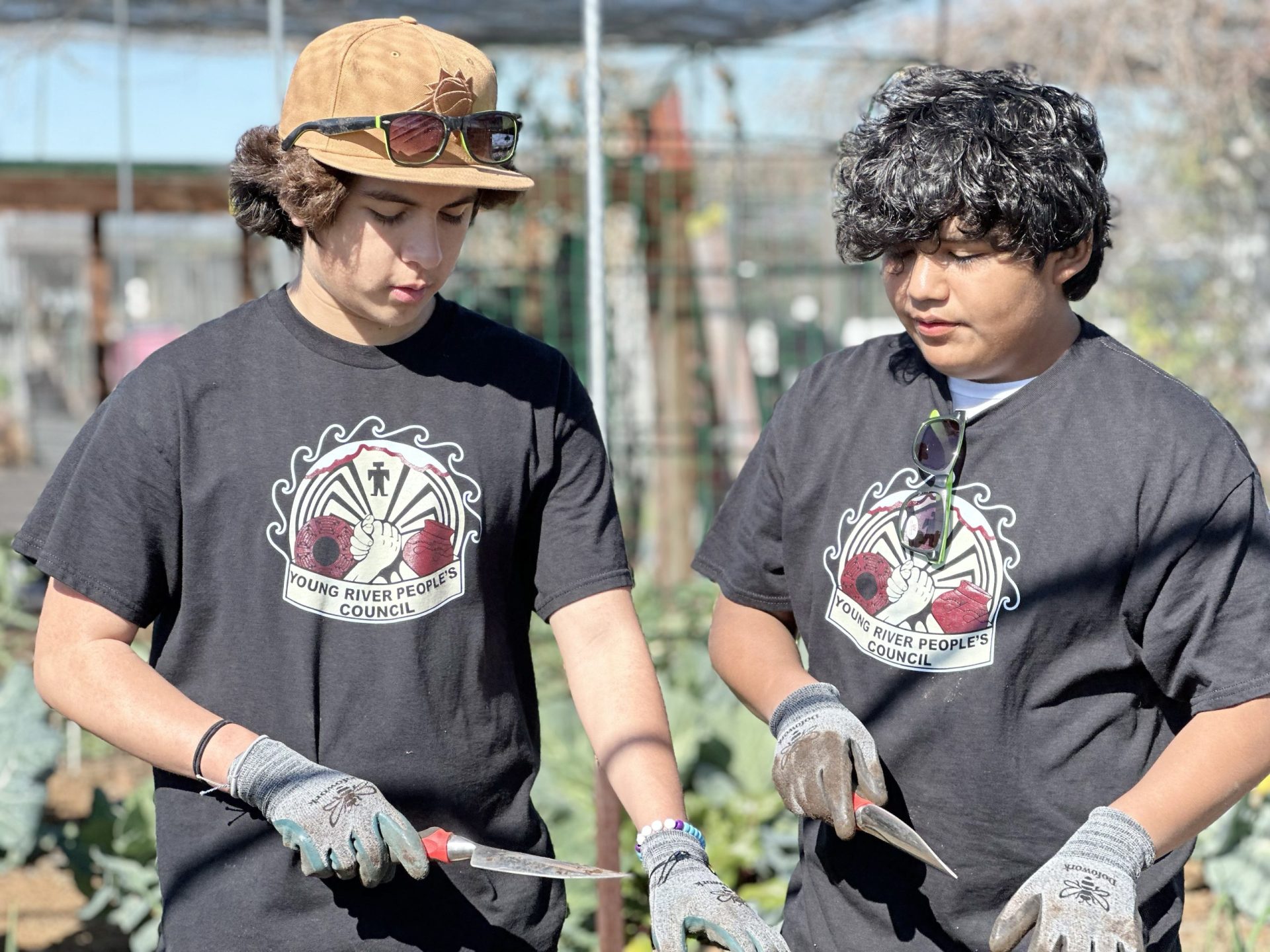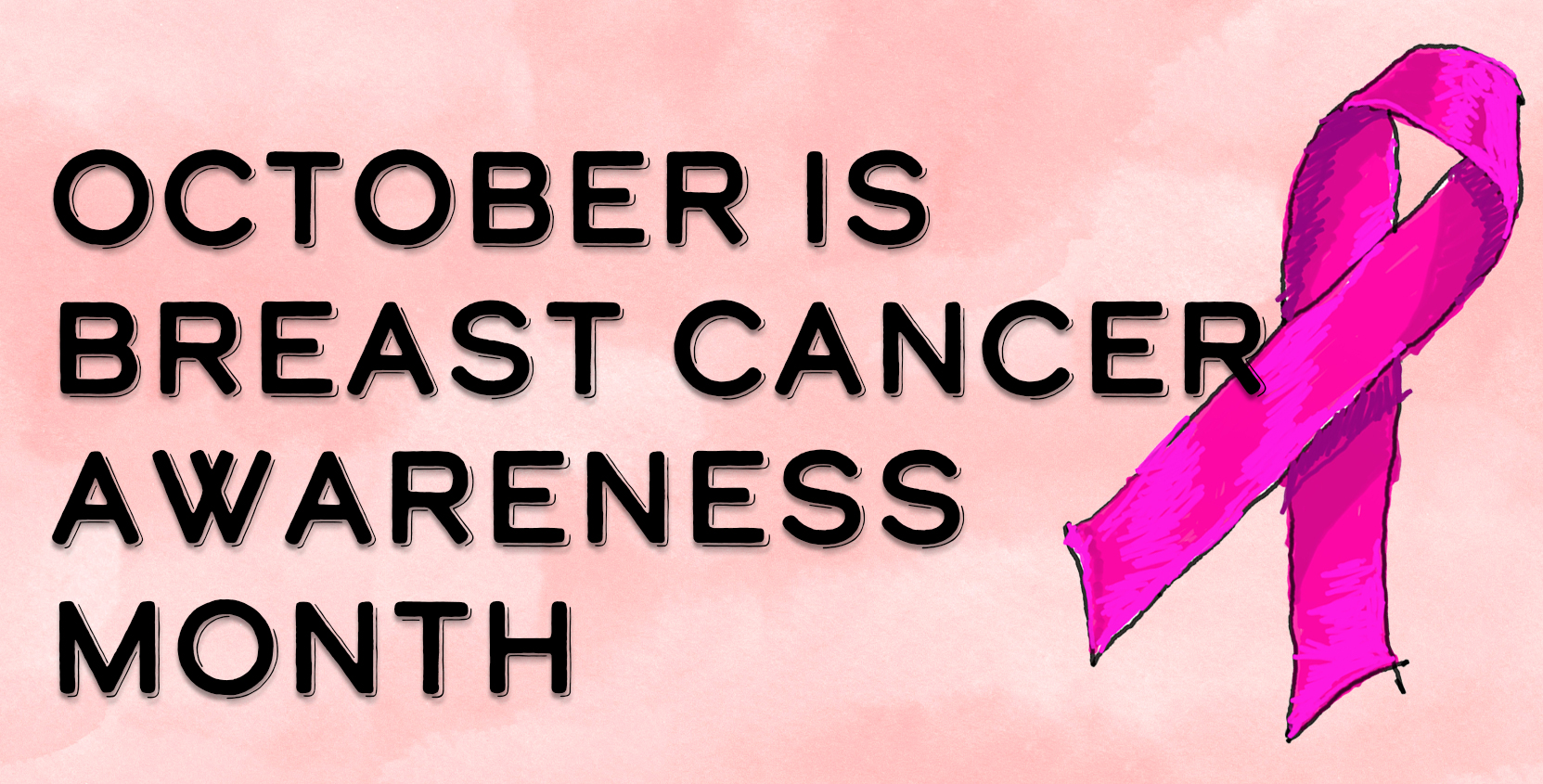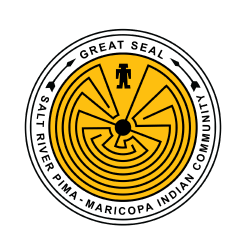VIEWS: 1167
August 11, 2025Shell Etching at Skeg Himdag Ki:
Jonathon Curry, a Salt River Pima Maricopa Indian Community member, taught the historical O’odham art of shell etching at Skeg Himdag Ki: on July 8 and 10.
For two hours each day, Community members who signed up learned the history of shell etching and a modern method for creating and designing their unique shells. Curry taught this class just weeks after leading another workshop with harvesting baidaj, or saguaro fruit.
On day one of this two-day workshop, Curry utilized that time to provide participants with a cultural overview of the history of shell etching, including the cultural and religious beliefs and photo references of both historic and modern-day etched shells.
“I’ve done a number of workshops now at this point where I feel like it’s important to have a basis of understanding because from my experience, these things are not talked about, these things are not openly shared, you have to really search out this information from various people to learn,” Curry explained.
He went into detail how the shells were gathered and where historic etched shells have been found throughout Arizona. Curry explains that only about 40 etched shells have been found in the southwestern region, with most of them located within the Phoenix Valley.
By the second day of the workshop, participants selected their shells to begin creating their own designs. In front of the classroom, a table was filled with shells. Some were etched, and some were plain; the Salt River Tribal Library provided the plain ones, which were hosting the class and had invited Curry to teach.
From there, participants were handed a plate, nail polish, paint brushes and a small cup to begin the process of shell etching. “To do these things, you have to have a lot of patience. This isn’t something you get instant gratification from,” said Curry. “And that’s kind of how I imagined our ancestors worked, that’s why they made…beautiful things, because they had the patience and the time to really focus and put their energy into it,” Curry said as participants began their process of creating etched shells.
As the class ended, many of the participants took their unfinished shells home, while others chose to leave them with Curry to finish the process and will hand them back at a later time.
